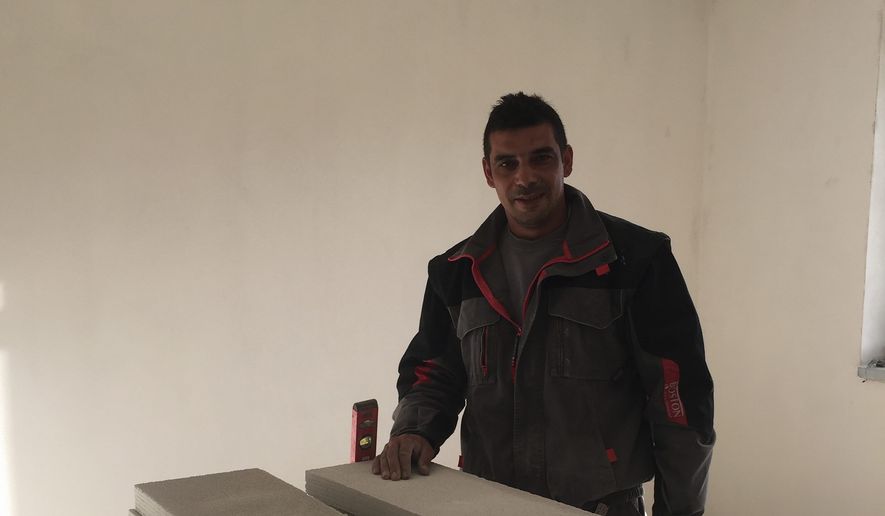SPISSKY HRHOV, Slovakia — Popularly derided as “gypsies,” the Roma people have long been resented and even despised across much of Eastern Europe.
But a remarkable municipal-owned business is helping this small mountainous village in the heart of Europe overcome those prejudices, providing what backers say is a model for integrating the continent’s longest-suffering underclass.
“Based on my experience, as soon as Roma and white people start to work together, they will become very close to each other,” said Vladimir Ledecky, the mayor of Spissky Hrhov in rural eastern Slovakia.
Villages in this depressed region were devastated as manufacturing industries evaporated after the end of communism in the early 1990s. Seeking to rebuild its economic base, Spissky Hrhov launched a government-owned business in 2005 with the goal of employing local people to improve infrastructure in the area.
“We did not have enough apartments. Such necessities as electricity and running water were lacking,” said Mr. Ledecky. “Almost nobody had any proper education. [But] we came to conclusion that 80 to 90 percent of the people were very clever and willing to work hard.”
The municipal government gave a $7,600 loan to the business, called Spissky Hrhov Municipal Social Enterprise, enough to hire three workers to make paving stones for the village’s crumbling sidewalks. The business paid off the loan after a year and then used the profits to expand into local construction projects, including 100 apartments, a swimming pool and a gymnasium. More recently, it has diversified into other ventures: a bakery, a sausage-making factory and a lumber-milling operation, with the sawdust providing biofuels for municipal vehicles.
In 1998, Spissky Hrhov had 700 inhabitants, down 500 from the population when the Berlin Wall fell. Half were Roma, an ethnic minority who migrated to Europe from India around 1,500 years ago. Nearly all the Roma were unemployed.
Today, almost 2,000 people live in the village. The enterprise has about 100 workers and 80 percent of the Roma have jobs, according to Slovak government figures.
In contrast, government statistics show that only 21 percent of Roma on average in Slovakia have jobs. In other words, 79 percent of Roma people in Slovakia are unemployed, compared with a jobless rate for Slovakia overall of about 8 percent.
“Spissky Hrhov was on the verge of extinction, but Mr. Ledecky established a community enterprise which built everything in our village, arranged hot water for every apartment,” said Jozef Seman, who manages the business.
Post-communist tensions
Acrimony between Slovaks and Roma, whom Slovaks often stereotype as lazy and unwilling to work, surged amid the economic hardship and uncertainty of the early post-communist years. But much of that ill will has dissipated with the success of the local business and the surge in employment opportunities for both communities, Mr. Seman said.
“Relations between the Roma community and white population are much better,” he said.
Jozef Kandrac, a 34-year-old Roma, works as a mechanic in the business. He married a Slovak woman in 2006, a rare occurrence even in the cosmopolitan capital of Bratislava.
“My wife is white, and we are very happy together,” said Mr. Kandrac. “We have never encountered any discrimination problems. We are satisfied with our life here. There are other intermixed marriages. One of the most beautiful [Roma] girls in the village, Misa, even made one Roman Catholic priest renounce celibacy. They have a happy family together.”
The integration starts early.
In the village school of 300 students, half are Roma. Typically, only 18 percent of Roma children attend schools in Slovakia for more than 10 years, a crucial factor in their likelihood of lacking a job later in life, according to the United Nations Development Program.
Jarmila Lajcakova, an analyst at the Bratislava-based Center for the Research and Ethnicity and Culture in Slovakia, said Mr. Ledecky realized that the integration of Roma was crucial to development of Spissky Hrhov in general.
“Spissky Hrhov is considered to be a big deal because of a widely shared prejudice against Roma people that they will never work or send children to school; they will only try to abuse the social system,” she said. “Ledecky was not driven by human rights ideals, but he rather pragmatically understood that having a poor Roma community in Spissky Hrhov was a potential source of problems.”
The village has even become something of a showcase for Slovakia internationally as well. When Thorbjorn Jagland, secretary-general of the Council of Europe, Europe’s leading human rights organization, made a two-day official trip to Slovakia last month, his itinerary included a visit to Spissky Hrhov.
The village still has its share of problems. Some 20 percent of the local Roma remain unemployed. Two Roma families in particular refuse to work in the business. Taking into account the growth of the village, further extension of the school and kindergarten is also on the agenda. These potentially costly projects will strain the village tax base and enterprise’s balance sheet.
“Spissky Hrhov is not a community where all the problems have been already solved,” said Alexander Musinka, a researcher focused on this topic at the Institute of Roma Studies at the University of Presov. “But it clearly shows that change is possible.”
Mr. Ledecky noted that many villages in Slovakia struggle with the problem of Roma integration. Their representatives came to see him to seek help but have not implemented any of his suggestions, he said.
“The media and people who have never met Roma people are creating discrimination and prejudices against Roma people,” said the mayor. “Nevertheless, people who work with them are very satisfied with their performance.”




Please read our comment policy before commenting.